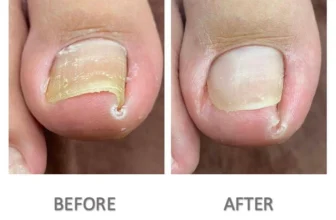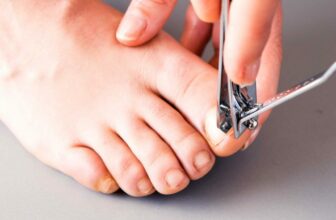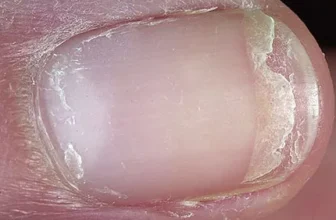How to Cut Your Toenails: Stop Making These Mistakes when Clipping Your Toenails
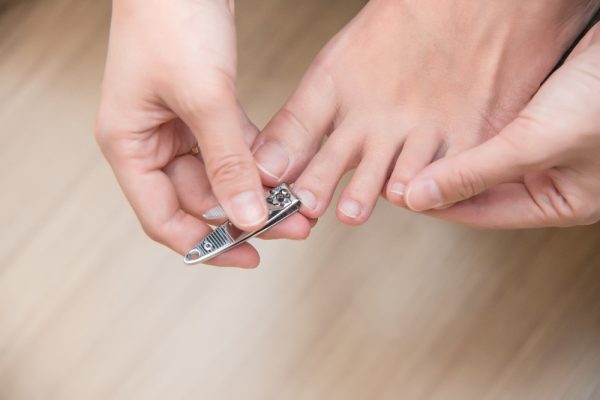
Nailing It: The Simple Secrets to Perfect Nails You Never Knew
“How do I cut my toenails properly?” But how many times have we paused and asked this question? Toenails. They’re a part of our anatomy that often gets overlooked until they become a nagging issue, catch on a sock, or become too long to ignore. Given that many common foot issues arise from incorrect toenail trimming, this seemingly simple question deserves our attention.
Believe it or not, how you trim your toenails significantly impacts your overall foot health. Cutting them the right way can help prevent painful ingrown toenails (read our article to know how to fix ingrown toenails), fungal infections, and a host of other foot-related issues. Especially if you have conditions like diabetes, where proper foot care is paramount, knowing how to cut your toenails correctly becomes crucial.
But let’s face it, even the best techniques can fall short without the right tools. Just like a master craftsman requires precision instruments, our feet, too, deserve the best care with top-notch equipment. Enter the world of professional and best toenail clippers.

Among these, the Swissklip Heavy Duty Toenail Clipper stands out, to know more about this product read the Swissklip Review article.
With its razor-sharp curved blades designed for precision and an ergonomically crafted non-slip handle, this German-engineered masterpiece is ideal for those seeking an efficient, pain-free toenail clipping experience.
However, the journey to impeccable podiatric health doesn’t merely stop at possessing a quality tool. In the following sections, we’ll delve into the details of how to cut toenails the right way, supported by expert insights and actionable tips.
Whether you’re a senior, someone dealing with mobility issues, or simply a person keen on maintaining their foot health, there’s a wealth of information ahead tailored just for you.
Let’s embark on this journey to mastering the art of toenail clipping!
The Anatomy of an Ingrown Toenail: Why That Pesky Ingrown Toenail Matters
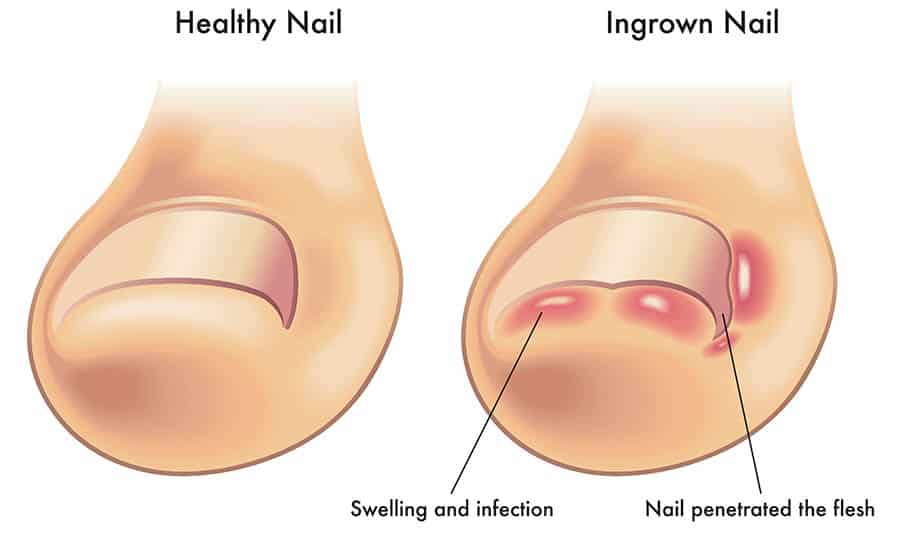
Have you ever experienced the nagging discomfort of an ingrown toenail? If so, you’re far from alone. And if not, consider yourself fortunate, but be wary: the way you approach toenail clipping plays a crucial role in avoiding this common issue.
Getting to Know Ingrown Toenails
An ingrown toenail happens when the edge of the toenail, usually the one on your big toe, grows into the surrounding skin. This can lead to pain, redness, swelling, and in some unfortunate instances, an infection. But how does something so seemingly mundane become such a widespread issue? More often than not, the root cause is improper toenail clipping.
Reasons for Ingrown Toenails Include:
- Cutting the nails too short.
- Clipping the toenails in a rounded fashion instead of straight across.
- Wearing shoes that are too tight or ill-fitting, pushing the nail into the skin.
The complication of an untreated ingrown toenail can range from the unsightly and uncomfortable to the downright painful. Imagine a bacterial infection oozing pus or a fungal infection turning the toenail an unsavory shade. The ramifications can be especially severe for individuals with diabetes, who might experience compromised circulation in their feet.
Preventing Ingrown Toenails through Proper Toenail Clipping Understanding “how to cut toenails properly” is your first line of defense against ingrown toenails. To ensure a straight and clean cut:
- Always cut the nail straight across, not rounding the edges, which is a common mistake.
- Avoid cutting the nail too short. Aim for a length where the nail still covers the base of the toenail bed.
A well-engineered toenail clipper can make a world of difference in this process. The best nail clippers offer an optimal trimming experience, making it easier to follow these guidelines. With its precision-crafted, razor-sharp blades, it takes the guesswork out of “how to cut toenails” effectively and reduces the risk of ingrown toenails.
While it may seem like a small detail in the grander scheme of personal grooming, understanding the anatomy of an ingrown toenail and the importance of proper toenail clipping is essential for anyone wishing to keep their feet in top condition. After all, with the right knowledge and tools at your disposal, you can step forward with confidence, knowing your feet are well taken care of.
Common Toenail Traps & Their Easy Fixes
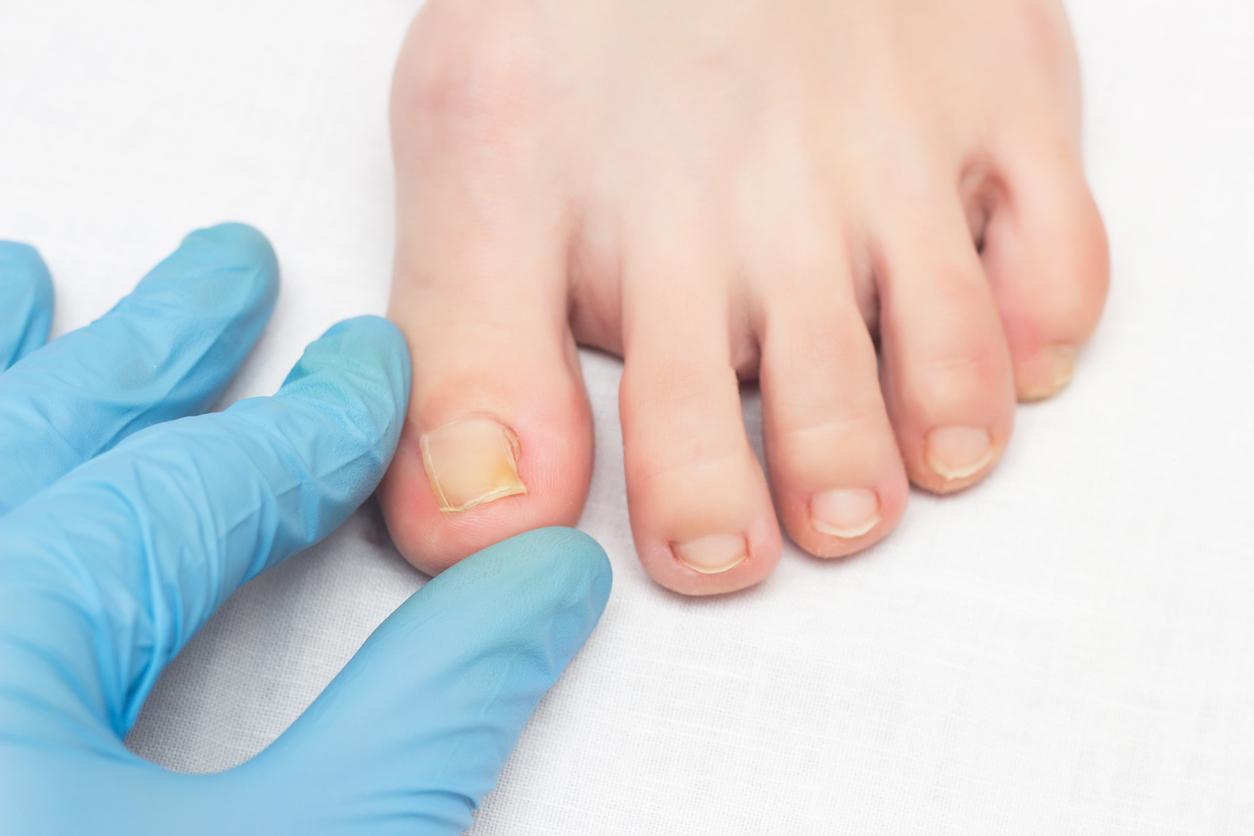
Toenail clipping may seem straightforward, but the nuances in technique and tool choice can profoundly impact the outcome. Over the years, podiatrists and foot care experts have repeatedly come across the same mistakes that lead to a range of toenail problems, from the mildly inconvenient to the outright painful. In this section, we’ll explore these common pitfalls and how you can navigate them for healthier feet.
a. The Tool Trap: Picking Right Over Just Any
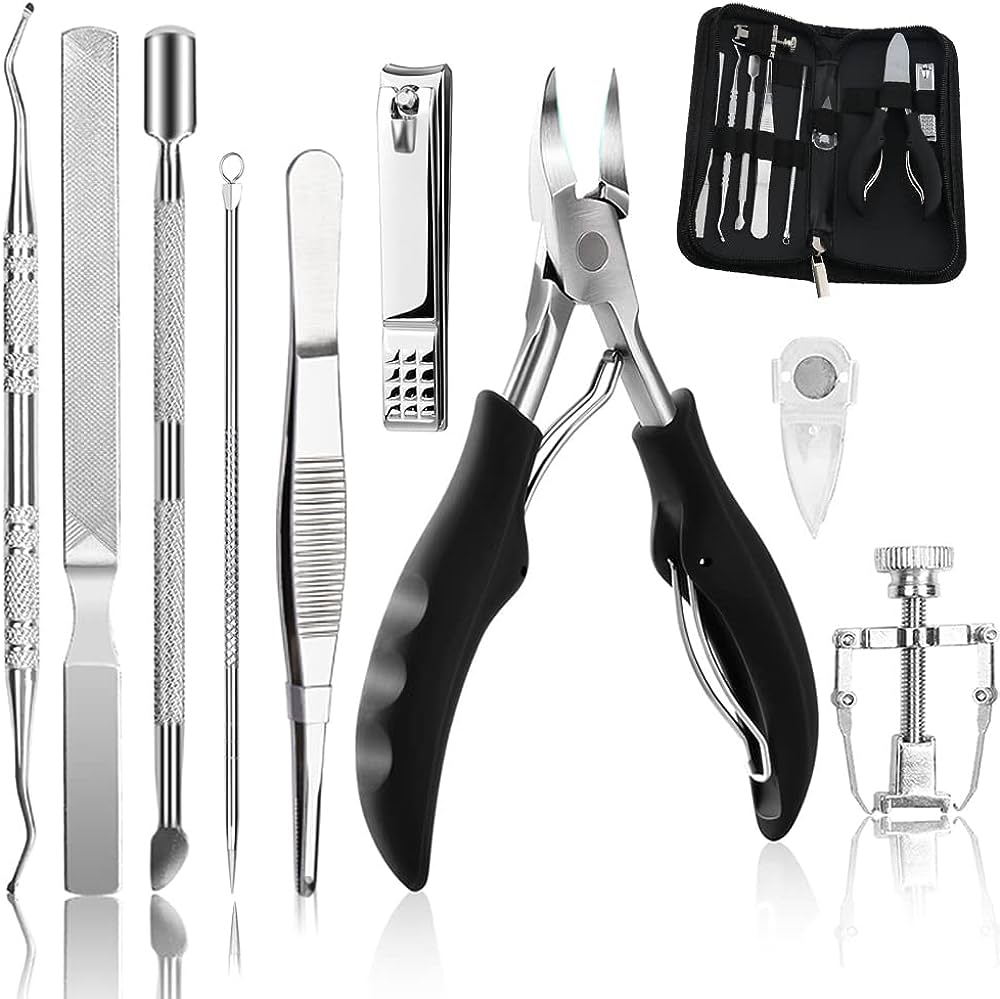
Imagine trying to create a masterpiece painting with a worn-out brush or attempting to construct a delicate model with blunt tools. The results would be less than satisfactory, right? The same principle applies to “toenail clipping.” The tool you use can make all the difference.
Common Mistakes:
- Using Household Scissors: Household scissors are neither sharp enough nor appropriately shaped to cut toenails. They can lead to uneven cuts, increasing the risk of ingrown toenails.
- Old, Dull Clippers: Using old clippers that have lost their sharpness can cause the toenail to tear or split, leaving an uneven edge that’s susceptible to becoming ingrown.
- Improperly Sized Clippers: Using fingernail clippers for toenails or vice versa can lead to imprecision, as they aren’t tailored for the specific nail thickness or curve.
The Solution: Investing in a specialized toenail clipper, tailored for the job, is vital. For those wondering “how to cut toenails properly,” the answer begins with the right equipment.
The best toenail clippers have several characteristics in common. Here’s why:
- Precision-Crafted Blades: Its laser-cut, razor-sharp blades ensure a clean cut every time, minimizing the risk of tearing or splitting.
- Ergonomic Design: The non-slip handle makes it comfortable to hold, giving you better control during the clipping process.
- Durable Construction: Made of surgical-grade stainless steel, this clipper is built to last, ensuring consistent performance over time.
By sidestepping the tool trap and equipping yourself with a specialized clipper, you not only elevate your toenail clipping experience but also lay the groundwork for better foot health in the long run.
As we move forward, we’ll delve into more mistakes and solutions, ensuring that by the end, you’ll master the art of “how to cut toenails” seamlessly.
b. The Wet Nail Dilemma: To Cut or Not to Cut Nails Post-Bath or Shower
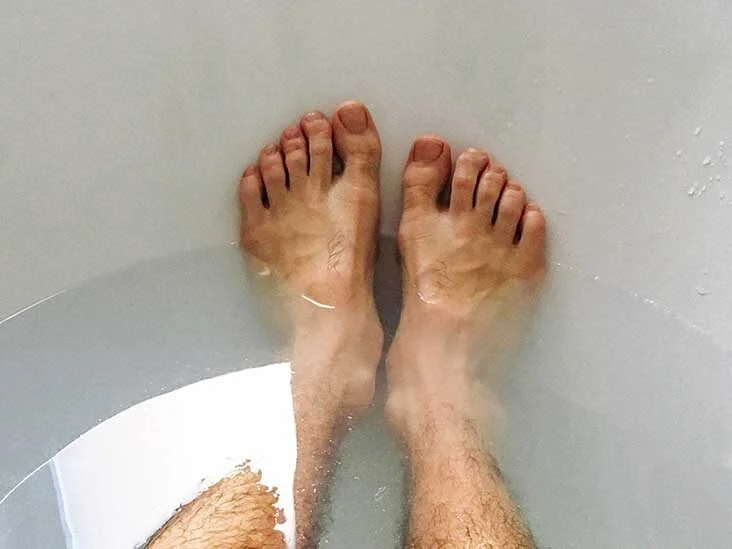
There’s a popular misconception that post-bath or post-shower is the perfect time to cut toenails, given their seemingly softer state. This assumption may sound logical, but in reality, wet toenails can pose unique challenges when clipping.
Why Cutting Wet Toenails Isn’t Ideal:
- Increased Fragility: According to the American Academy of Dermatology (AAD), when nails are soaked in water, they become more pliable and weakened1. This means they’re more prone to tearing, splitting, or ragged edges when cut.
- Loss of Precision: Softer, wet nails can bend under the pressure of the clippers, making it harder to get a straight, clean cut. This imprecision can increase the risk of ingrown toenails or uneven growth.
- Risk of Infection: Cutting wet nails can sometimes create tiny tears in the skin around the nail, often invisible to the naked eye. These micro-tears can become entry points for bacteria and fungi, leading to potential infections2.
How to Cut Toenails Properly Post-Bath/Shower:
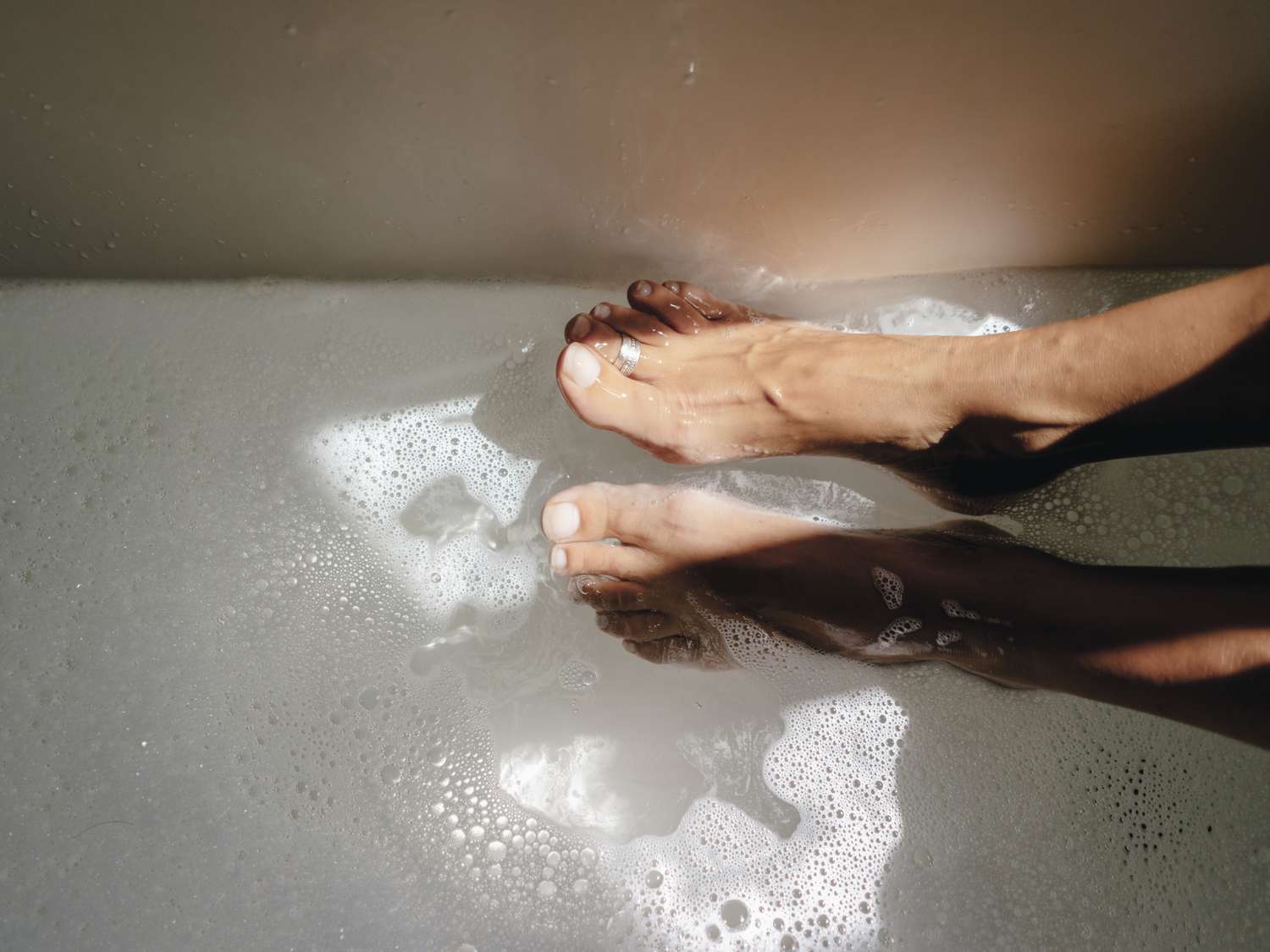
- Dry Your Feet Thoroughly: If you prefer the post-bath routine, ensure your toenails are dried completely. Using a soft, absorbent towel, pat your feet dry, paying special attention to the spaces between the toes and the nail bed.
- Wait: Allow some time post-shower or bath for your nails to return to their natural hardness. This typically doesn’t take long, but even waiting 10-15 minutes can make a significant difference.
- Use a Quality Clipper: Given the enhanced vulnerability of recently-soaked nails, using a precision tool becomes even more critical.
Remember, while there’s no harm in softening thick toenails for easier clipping, it’s essential to approach the task with care, ensuring that your toenails are adequately dried and you’re equipped with a reliable clipper.
By sidestepping the wet nail dilemma and equipping yourself with specialized tools, you can ensure your toenails are trimmed effectively, promoting better foot health and minimizing potential complications.
c. The Nail Length: Goldilocks Had It Right
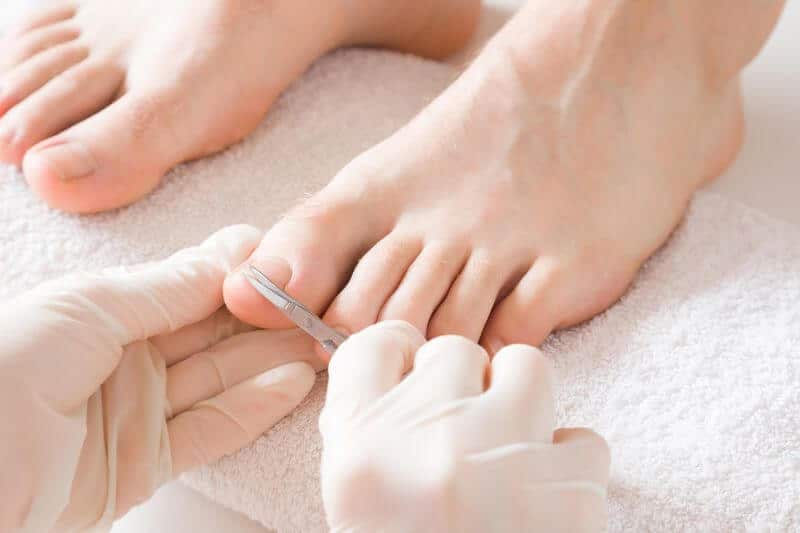
It’s all too common to see individuals veering to extremes when it comes to toenail length, either cutting them too short for convenience or leaving them overly long for aesthetics. But is there a “just right” way when it comes to toenail length? Let’s explore the implications of both extremes and determine the ideal nail length for optimal foot health.
Dangers of Cutting Toenails Too Short:
- Ingrown Toenails: One of the leading causes of ingrown toenails is trimming them excessively short. When nails are cut too close to the skin, it allows the surrounding skin to grow over the nail, leading to painful ingrowths1.
- Increased Vulnerability: Very short toenails expose the sensitive nail bed, making it more susceptible to trauma, infections, and other external threats 2.
Risks of Leaving Toenails Too Long:
- Snagging and Trauma: Long toenails can easily catch on socks, shoes, or bedding, leading to painful tears or even complete avulsion (nail detachment)3.
- Dirt and Fungi Accumulation: Extended toenails can trap dirt and moisture, creating a conducive environment for fungal infections4.
The Golden Rule of Ideal Nail Length:
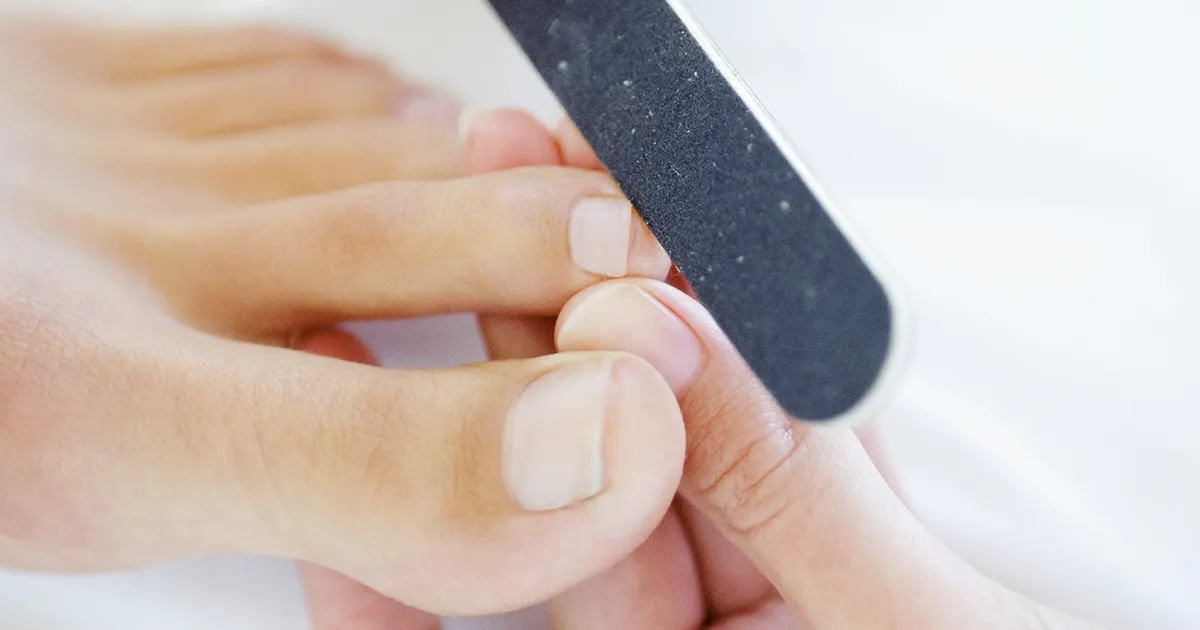
The optimal toenail length is one where the nail edge is aligned with the tip of the toe, neither protruding significantly nor cut so short that the nail bed is overly exposed. This length ensures the toenail serves its protective function while reducing the risks associated with both extremes.
For those seeking guidance on “how to cut toenails” to achieve this balanced length, using a quality clipper becomes paramount. The best toenail clippers, for instance, is engineered to offer precision and control, making it easier to attain that ideal length without over-clipping or leaving ragged edges.
Toenail length may seem like a minor detail in the broader context of foot health, but its implications are vast. By understanding the risks and benefits associated with nail length and using the right tools you can ensure healthier, happier feet.
d. Curved Nails: Fashion Statement or Trouble in the Making?
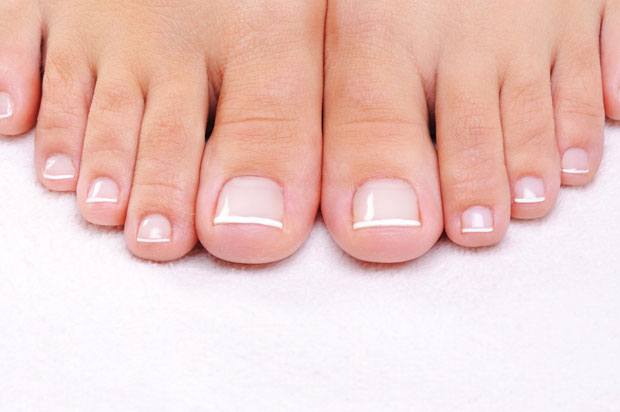
The aesthetics of a neatly rounded toenail may seem alluring. Many believe that a smooth curve not only looks better but also reduces the risk of nail edges catching on socks or shoes. While this may sound logical, the reality presents a different picture, especially when it comes to the risk of ingrown toenails.
The Curved Nail Myth:
It’s a widespread belief that curving the edges of toenails during clipping helps prevent snagging and gives a more polished appearance. But when it comes to health implications, this practice might be setting you up for discomfort or even pain.
Why Curving the Toenails Isn’t Ideal:
- Increased Risk of Ingrown Toenails: A study published in the Journal of Foot and Ankle Research emphasizes that incorrect nail trimming, particularly rounding off toenails, is a significant factor in the development of ingrown toenails1.
- Irregular Nail Growth: Over time, habitually curving the toenails can influence the way they grow, leading to irregularities that might cause discomfort in tight-fitting shoes2.
- Harder to Monitor: Curved nails can make it more challenging to monitor nail health and detect issues such as fungal infections, which might present initially at the nail’s edges.
Cut Toenails Straight Across: The Solution
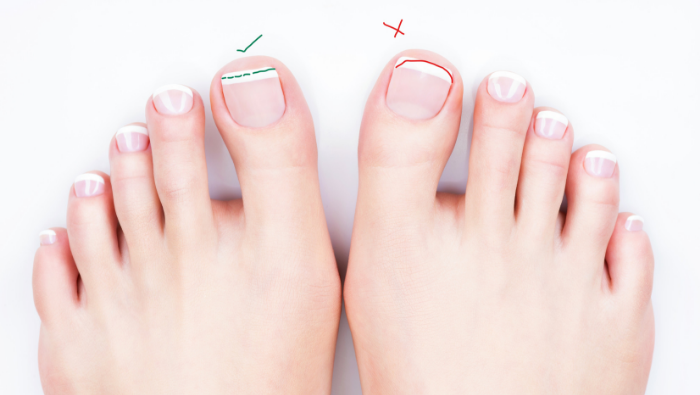
To prevent the pitfalls associated with curved toenails:
- Clip Straight Across: Always aim to cut your toenails straight across. This approach helps ensure the nail grows out correctly without digging into the skin.
- Smooth the Edges: After a straight cut, you can gently file down any sharp edges with a nail file for comfort without compromising the nail’s integrity.
Achieving a precise straight cut becomes significantly easier with a dedicated tool tailored for the task. The best toenail clippers are known for its precision and ergonomic design, can be your ally in mastering the art of “how to cut toenails” straight across without unnecessary curvatures.
In conclusion, while the allure of curved toenails might be strong, prioritizing foot health over fleeting aesthetics will ensure that you walk comfortably, free from the pain of ingrown toenails. With knowledge and the right tools, you’re well-equipped to give your toenails the care they deserve.
e. The Cuticle Caution: The Unsung Heroes of Nail Health
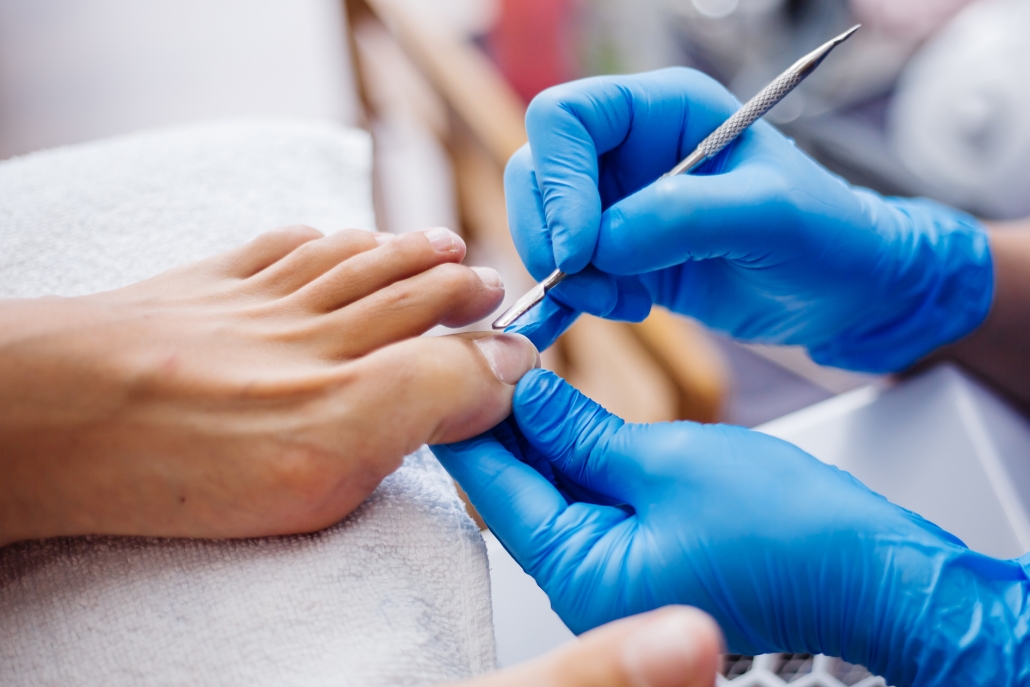
In the quest for perfectly groomed feet, many often turn their attention to the thin layer of skin at the base of the nail: the cuticle. Though it might appear as a minor detail, the cuticle plays an essential protective role in our nail health. However, in modern nail care, it’s not uncommon to see this protective barrier being pushed back or even cut, potentially opening the door to a host of complications.
The Protective Role of Cuticles:
- Natural Barrier: The cuticle acts as a seal between the nail and the skin, preventing the entry of bacteria, fungi, and other pathogens1.
- Nail Health: By shielding the nail’s growth matrix (the part of the nail under the cuticle where new cells develop), the cuticle plays a pivotal role in the overall health and growth of the nail2.
Why Tampering with Cuticles Can Be Harmful:
- Risk of Infection: Pushing back or cutting the cuticle can create tiny tears, often invisible, that become entry points for pathogens, leading to infections like paronychia3.
- Impaired Nail Growth: Any damage to the cuticle can potentially affect the nail’s growth matrix, leading to irregular or compromised nail growth.
- Aesthetic Issues: Over time, consistent tampering with the cuticle can lead to thicker, more pronounced cuticles, the very issue many try to avoid in the first place.
How to Handle Cuticles Safely:
- Moisturize: Keeping your cuticles hydrated can prevent them from becoming dry or flaky. Use a good moisturizer or cuticle oil regularly.
- Gentle Pushing: If you must address overgrown cuticles, use a wooden orange stick after a shower (when they are softer) to gently push them back. Avoid using metal tools, which can be too aggressive.
- Avoid Cutting: Unless there’s a hangnail or a specific issue, try to avoid cutting the cuticle. If necessary, consult a professional.
Incorporating the right tools for toenail maintenance can further protect your feet from potential issues. A well-clipped toenail, paired with a preserved cuticle, ensures optimal foot health.
In summation, while the allure of manicured cuticles can be tempting, understanding and respecting their protective role is paramount. With the right knowledge, a gentle approach, and quality tools at your disposal, achieving well-groomed and healthy toenails becomes a seamless endeavor.
f. The Moisture Misstep: Giving Your Nails a Drink
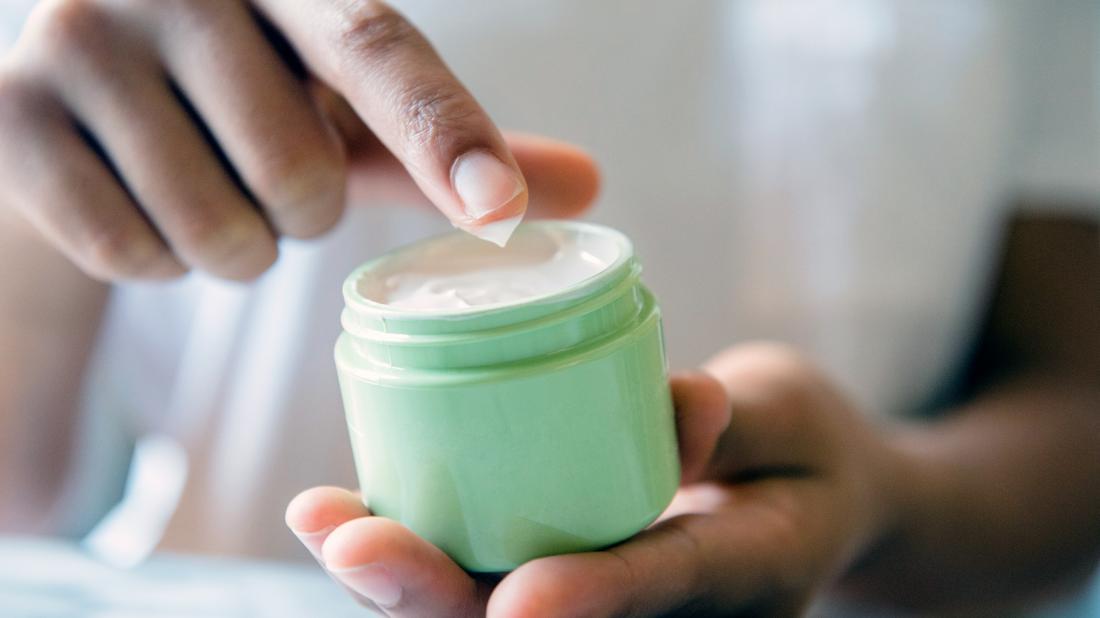
In the arena of foot care, moisturization often gets associated solely with the soles of our feet. However, our toenails, too, crave moisture. Dry, brittle toenails not only appear lackluster but are also prone to breakage, splits, and other issues. Here, we delve into the importance of keeping toenails moisturized and the potential pitfalls of neglecting this vital aspect of toenail care.
Why Toenail Moisturization Matters:
- Helps Flexibility: Hydrated toenails are more flexible and less likely to break or tear, even under pressure1.
- Increases Health and Appearance: Well-moisturized toenails have a healthy sheen and are smoother to the touch, devoid of the rough texture often seen in dry nails.
- Prevents Splitting: Dry toenails can split, creating a painful condition and leaving the nail vulnerable to infections2.
Common Moisturization Mistakes:
- Ignoring the Nails After Clipping: Many moisturize their feet but overlook the nails, especially after cutting them. This step is vital as freshly cut nails can often benefit from a boost of hydration.
- Over-reliance on Pedicures: While pedicures often include moisturizing elements, relying solely on periodic pedicure sessions isn’t enough. Regular at-home moisturization is crucial.
- Using Harsh Chemicals: Some nail polishes and removers contain chemicals that can dry out the nails. Always opt for hydrating and nourishing formulas.
Steps to Ensure Well-Moisturized Toenails:
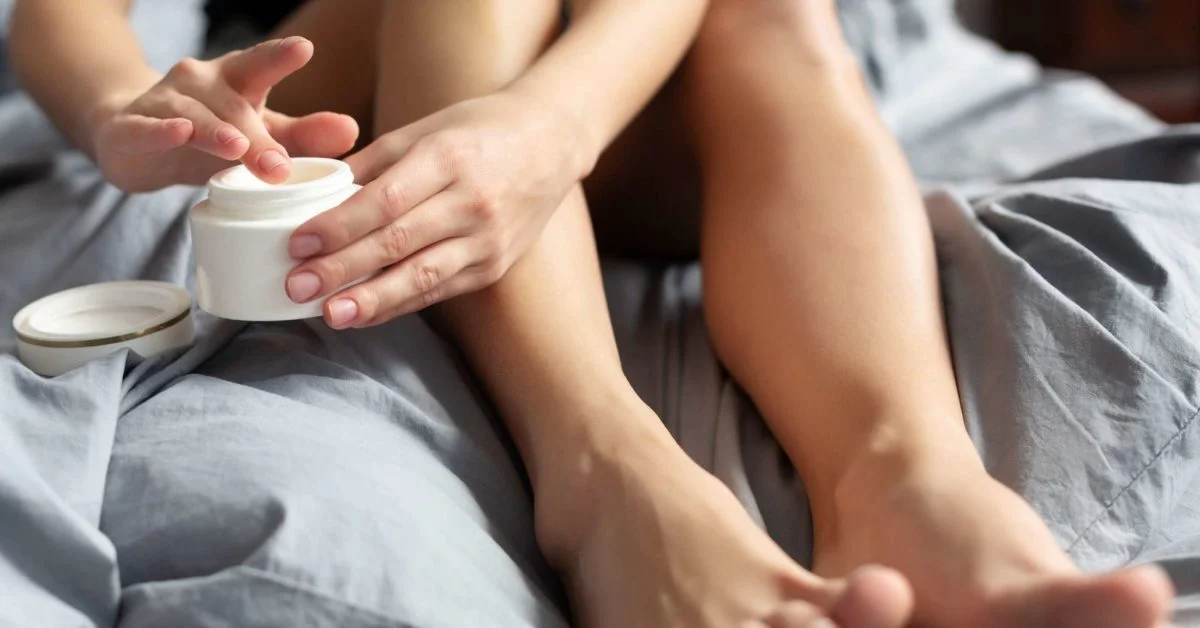
- Hydrate Daily: Integrate toenail moisturization into your daily foot care routine. A simple dab of cuticle oil or any hydrating foot cream can do wonders.
- Post-Clipping Care: After using a reliable tool for a precise cut, moisturizing the toenails can provide them with the necessary hydration to maintain their flexibility and strength.
- Avoid Harsh Agents: Opt for acetone-free nail polish removers and hydrating nail polishes. Moreover, if you frequently soak your feet, ensure you moisturize them thoroughly afterward.
In essence, understanding the importance of toenail moisturization and incorporating it into your foot care routine is integral to ensuring your toenails remain strong, healthy, and resilient. With the combination of regular hydration and precision clipping using tools, you are well on your way to flaunting toenails that are not only aesthetically pleasing but also in prime health.
Expert Toe-Tips for Healthy Toenails: Unlocking Foot Care’s Best Kept Secrets
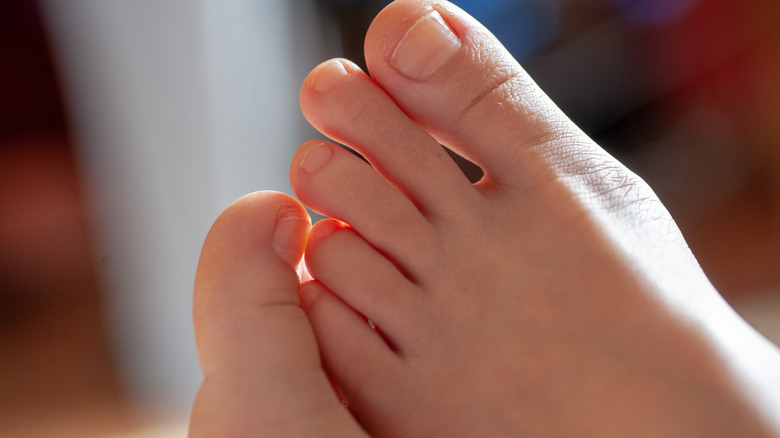
Unlocking the mysteries of impeccable toenail health is akin to accessing a treasure trove of knowledge passed down by experts over generations. In this section, we lift the veil on some expert strategies that, though often overlooked, can make a colossal difference in your foot care journey.
a. Clean and Clear: The Lost Ritual of Tool Hygiene
Cleanliness and hygiene are paramount, not just for your feet, but also for the tools that come in contact with them.
The Unsung Hero – Isopropyl Alcohol: While water and soap do a decent job cleaning, a thorough disinfection with 70%-90% isopropyl alcohol is a game-changer1. This simple act ensures that any lurking bacteria or fungi on your tools are eradicated, paving the way for a safer toenail trimming experience.
b. The Two-Cut Technique: The Simple Trick for Straight Nails
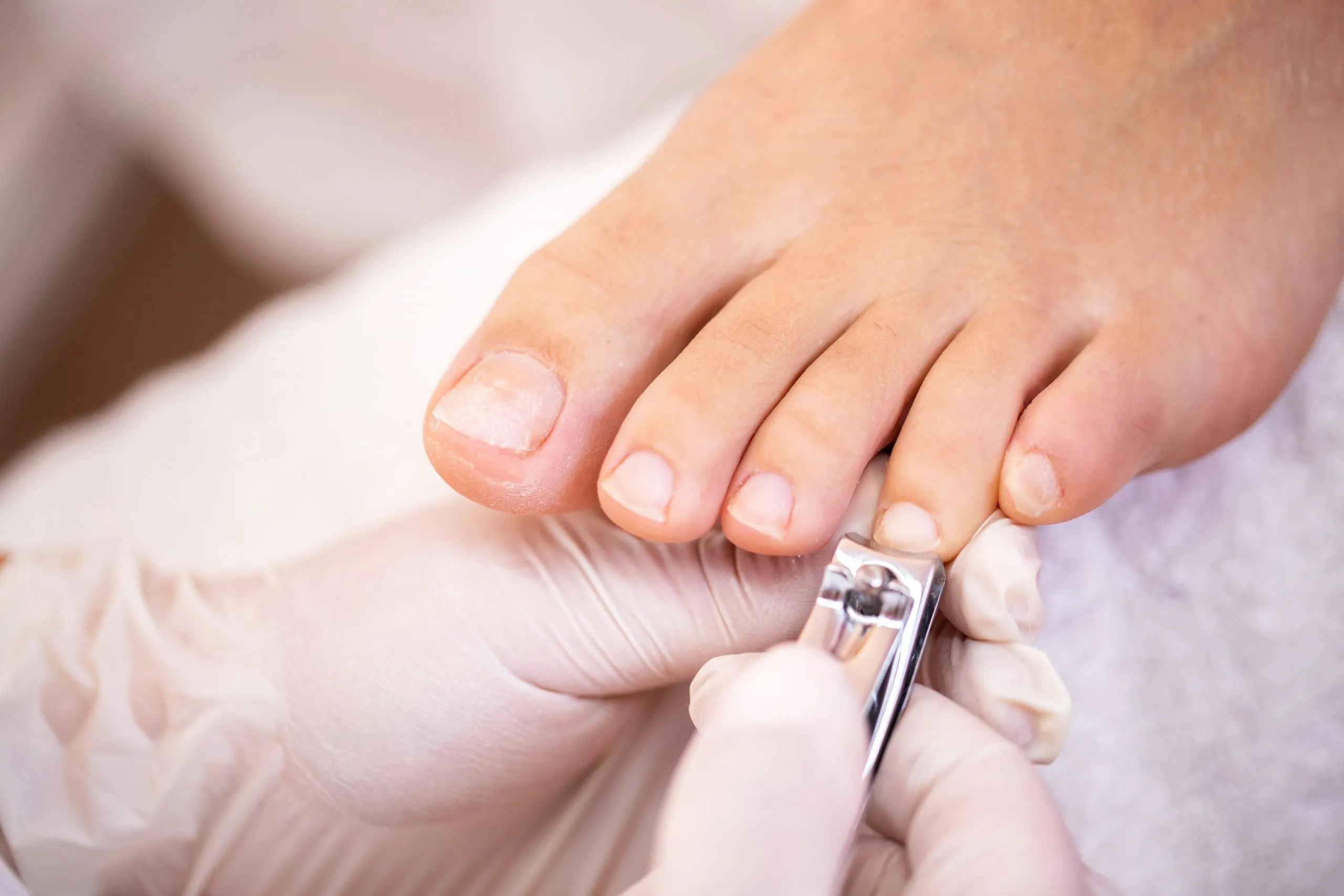
The age-old debate of “how to cut toenails” finds its answer in a technique whispered among experts but rarely publicized.
Crafting the Perfect Straight Edge: Begin by making a slight cut at one edge of the toenail, establishing the direction of the desired straight edge. Then, with the path set, proceed to cut across the nail to the other side. This two-step dance ensures a flawless straight cut every time, reducing the risks of ingrown nails2.
c. Gearing Up with Specialized Tools: Why the Right Tool Makes All the Difference
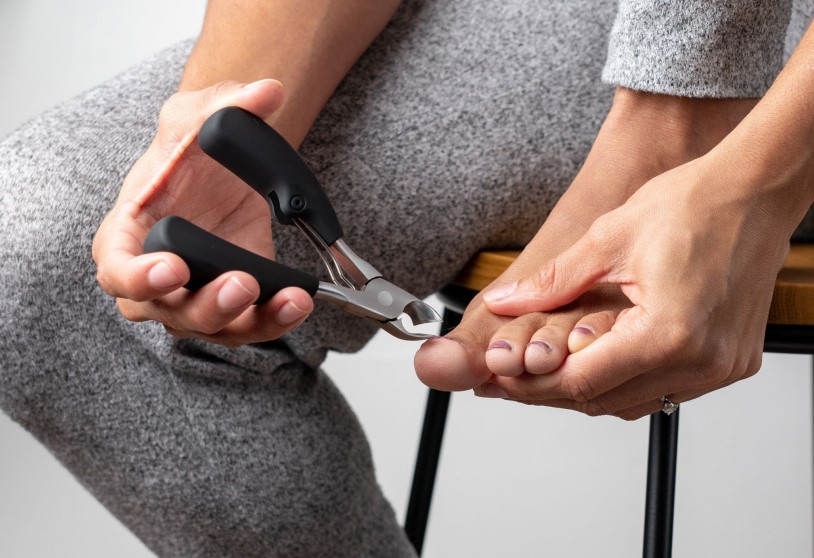
In every craft, the artisan’s prowess is amplified by the quality of their tools. The realm of foot care is no different.
The Golden Standard – Swissklip Heavy Duty Toenail Clipper: While there are myriad tools available, investing in a specialized toenail clipper is non-negotiable for those seeking excellence. Designed with precision and durability in mind, tools that offer an unparalleled experience, ensuring each cut is both accurate and effortless.
In conclusion, the secrets to impeccable toenail health, while profound, are within anyone’s grasp. By weaving in the rituals of cleanliness, mastering the art of the two-cut technique, and arming oneself with specialized tools, the journey to perfect toenails becomes not just attainable, but also a delightful endeavor.
Stepping Up Your Game: The Simple Guide to Great Foot Health
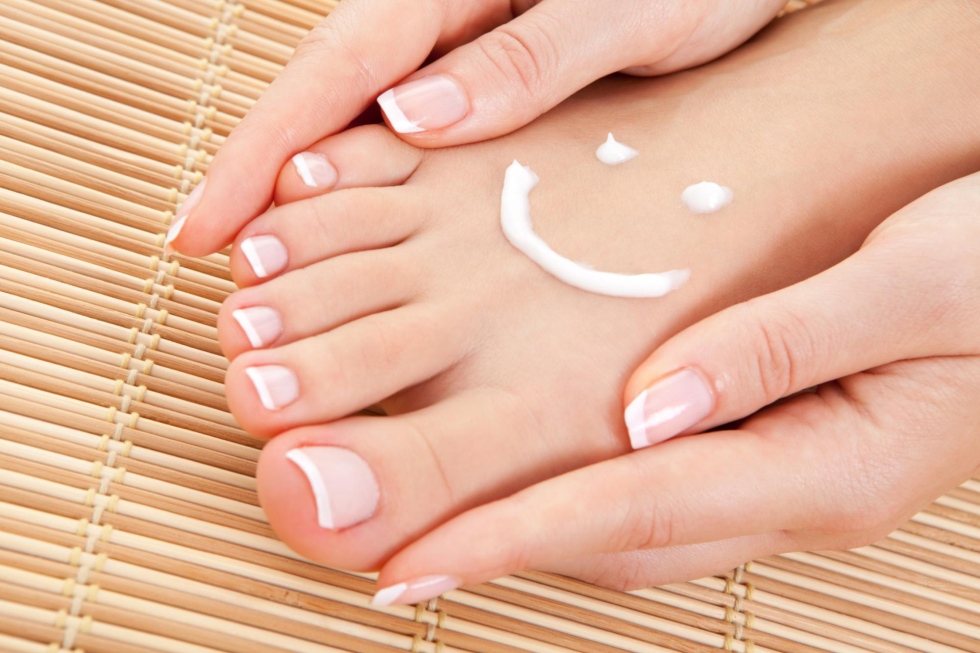
Back to Basics: What We Forgot About Toenail Care
Foot care, an often-overlooked realm of self-care, holds the ancient secrets to holistic well-being. As we’ve journeyed through the hallowed annals of podiatric wisdom, it’s evident that mastering the simple yet profound act of toenail clipping can have a ripple effect on one’s overall health.
The Beacon of Precision: Swissklip Heavy Duty Toenail Clipper: On this path, tools matter. They’re not just instruments but allies, guiding and ensuring every step is taken with precision. While there’s a plethora of options in the vast market, this stand as lighthouses, shedding light on the true essence of “how to cut toenails” with grace and efficacy.
The Final Footprint:
Toenail care is not merely a chore, but a ritual, a celebration of oneself. As we’ve delved deep into the intricacies of “how to cut toenails properly,” we realize that it’s more than just aesthetics; it’s about health, comfort, and confidence.
Remember, every journey begins with a single step, and in the world of podiatric health, that step is informed, conscious toenail care. As you march forward, equipped with newfound knowledge and tools, every step you take resonate with confidence, grace, and impeccable health.
To those embarking on this path or already deep into their podiatric voyage, here’s to rediscovering the art of toenail care, and to every step taken in the pursuit of holistic health. Safe travels on this timeless odyssey!
Footnotes
- American Academy of Dermatology – Tips for Healthy Nails ↩
- Podiatry Today – Key Insights On Treating Ingrown Toenails ↩
- Mayo Clinic – Ingrown Toenails ↩
- American Academy of Dermatology – Tips for Healthy Nails ↩
- Foot Health Facts – Long Toenails ↩
- WebMD – Fungal Nail Infection ↩
- Journal of Foot and Ankle Research – Ingrown toenails ↩
- American Orthopedic Foot & Ankle Society – Toenail Care ↩
- American Academy of Dermatology – Cuticle Care ↩
- Harvard Health Publishing – Taking good care of your fingernails ↩
- Harvard Health – Paronychia (Nail Infection) ↩
- CDC – Guideline for Disinfection and Sterilization in Healthcare Facilities ↩
- Podiatry Today – Expert Insights On Treating Ingrown Toenails ↩
- American Academy of Dermatology – Brittle Splitting Nails ↩
- WebMD – The Basics of Pedicure Safety ↩



